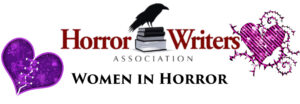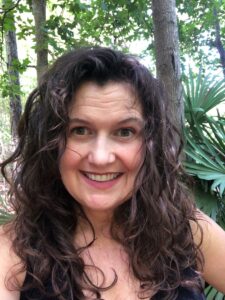Women in Horror: Interview with Victoria Nations


Victoria Nations writes Gothic and weird horror, often about creatures with emotional baggage. Her fiction has appeared in IN SOMNIO: A Collection of Modern Gothic Horror, Blood & Bone: An Anthology of Body Horror by Women & Non-Binary Writers, and Dangerous Waters: Deadly Women of the Sea, among other publications. Her poetry has appeared in Magpie Messenger Literary Magazine, HWA Poetry Showcase, Volume IX, and the Bram Stoker Award-nominated anthology, MOTHER: Tales of Love and Terror.
Victoria lives in Florida, U.S.A. with her wife and son, who indulge her love of monsters. Find her online at www.VictoriaNations.com and on Twitter and Instagram at @Leaves_Cobwebs.
What inspired you to start writing?
I was a voracious reader growing up. My folks introduced me to Edgar Allan Poe, and then let me read everything from horror comics to Stephen King and Anne Rice. I started by writing poetry, and then stories, which my father also wrote. It felt like a natural way to express myself.
Ten years ago, I took a creative writing course while my father went through cancer treatment, and I did my first NaNoWriMo after he passed. Writing helped me through my exhaustion and grief, and I was inspired to become serious about polishing and publishing my stories.
What was it about the horror genre that drew you to it?
I have always loved horror. The aesthetics of spooky forests, moldering ruins, and terrifying creatures are the best. They fill me with joy. Deeper than that, though, horror taps into the most visceral of emotions. We feel dread and horror in the pit of our stomach. We feel the clench of terror in our chest. The best horror is felt in our bodies and makes our heads swim with emotions.
Do you make a conscious effort to include female characters and themes in your writing and if so, what do you want to portray?
Most of my characters are women or gender fluid, many of them are queer, and female relationships are a recurring theme in my stories. These come naturally. I am making a conscious choice to write about middle aged women. There’s a dearth of older women as main characters in horror, except as monsters. I want stories about older women’s wisdom, sexiness, and power, where if they are monsters, age isn’t the source of their monstrosity.
What has writing horror taught you about the world and yourself?
Writing horror has cracked me open emotionally. Writing about my deepest fears is terrifying, but it’s transformative, too. It has also taught me how universal our experiences and reactions are. Even the weirdest, most outrageous stories play on fears that many of us share.
How have you seen the horror genre change over the years? And how do you think it will continue to evolve?
Horror is evolving in incredible ways right now. I’m especially excited for how classic subgenres are experiencing a rebirth, such as Gothic horror and weird fiction. I’m also excited for the rise in romantic horror, since romance and horror both delve into our most deep-seated emotions. The combination is delicious.
How do you feel women have been represented thus far in the genre and what hopes do you have for representation in the genre going forward?
As with all genres, women in horror have often been portrayed in flat, stereotypical ways. My hope is that publishers choose to publish stories that portray complex, nuanced women from a variety of communities and cultures, and with an array of physical presentation. I hope readers expand their reading to include women horror authors throughout the year.
Who are some of your favorite female characters in horror?
Mina Harker and Lucy Westenra from Dracula by Bram Stoker and Reluctant Immortals by Gwendolyn Kite. Mina is known for compiling the epistolary notes of the men, and Lucy is known as a free spirited girl who succumbs to Dracula. But these books also show their deep friendship, their temerity in an era when they had limited agency, and their courage while facing down Dracula.
Who are some women who write horror you recommend our audience check out?
There are so many incredible women writing horror fiction and poetry! I’m especially excited about Mary Rajotte, Kathleen Palm, R.J. Joseph, Kristi DeMeester, Christi Nogle, Jo Kaplan, L.H. Moore, V. Castro, Cynthia Pelayo, L. Marie Wood, Gwendolyn Kiste, Michelle Renee Lane, Sonora Taylor, Roni Stinger, C.O. Davidson, Pamela Durgin, Tori Fredrick, Emily Ruby, Tonia Ransom, Lee Murray, Geneve Flynn, Linda Addison, Grace R. Reynolds, Carina Bissett, Jessica York, Donna Lynch, Nicole Willson, Angela Yuriko Smith, April Yates, and Francis Lu-Pai Ippolito, and Stephanie M. Wytovich.
What is one piece of advice you would give horror authors today?
Horror is a vast genre that encompasses everything that scares and repulses us. It can be quiet dread, horrific and bloody, or weird and transgressive. Write about what scares you. The depth of your emotion will come through, and those will be the stories that others connect with.
And to the women who write horror out there who are just getting started, what advice would you give them?
Write the stories you want to write, with characters and experiences you want to read about, and then write some more. Along the way, seek out writers who share your goals, and boost each other up. When you’re ready to submit, choose publishers who support women and marginalized writers, as they will treat you as the professional that you are.



